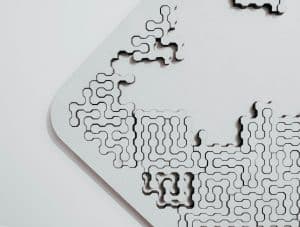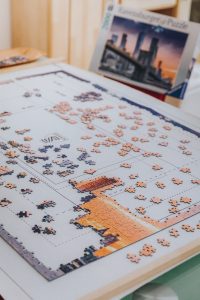Are jigsaw puzzles considered STEM? This question arises from the growing popularity of STEM (Science, Technology, Engineering, and Mathematics) education and its focus on developing skills related to these disciplines. Jigsaw puzzles, well-known for their ability to entertain and challenge people of all ages, also offer numerous cognitive benefits. In this article, we will explore whether jigsaw puzzles can be considered a part of STEM education and how they contribute to the development of spatial skills, critical thinking, and problem-solving abilities.
The Connection Between Jigsaw Puzzles and STEM
Jigsaw puzzles, often categorized as spatial skills activities, have been a staple in many households for generations. These puzzles require individuals to fit various shaped pieces together to create a complete picture. The process of solving a jigsaw puzzle involves critical thinking, spatial concepts, and the ability to visualize the bigger picture. All of these skills are vital components of STEM education.
Spatial Skills and Puzzle Play
Spatial skills, the ability to understand and manipulate objects in space, play a crucial role in various STEM disciplines such as engineering, architecture, and technology. Research has shown that individuals who engage in jigsaw puzzle play during early childhood develop better spatial skills later in life. According to developmental science, puzzle play helps children understand shapes, sizes, and spatial relationships, leading to improved spatial awareness and reasoning abilities.
Critical Thinking and Problem-Solving Abilities
Jigsaw puzzles also promote critical thinking and problem-solving abilities, which are fundamental skills in STEM fields. When solving puzzles, individuals must analyze, strategize, and make decisions to fit the pieces together. This process builds logical thinking and develops creative problem-solving skills, invaluable in science, math, and technology-related challenges.

The Impact of Jigsaw Puzzles on Brain Development
Solving puzzles has been shown to have a positive impact on brain development, particularly in the activation of brain cells and the enhancement of short-term memory. The complex and engaging nature of puzzle-solving stimulates the brain, increasing neural connections and fostering the growth of new brain cells. This strengthens the ability to learn and retain information, crucial for success in STEM disciplines.

Jigsaw Puzzles as STEM Activities
Given the existing connections between jigsaw puzzles and STEM skills, it is evident that puzzles can be considered as STEM activities. They provide an opportunity for individuals of all ages, especially children, to engage in hands-on learning experiences that develop critical STEM-related abilities. By solving puzzles, children can explore different shapes, analyze spatial relationships, and enhance their logical thinking skills, all while having fun.
The Role of Parents and Educators
Parents and educators play a vital role in incorporating jigsaw puzzles as part of STEM education. By providing children with puzzles of varying complexity, they can encourage the development of spatial skills, critical thinking, and problem-solving abilities. By engaging in puzzle play, parents and educators can instill a love for STEM disciplines from an early age, creating a solid foundation for future success.
Are Jigsaw Puzzles Considered STEM? – Final Thoughts
Jigsaw puzzles have a rightful place in the realm of STEM education. These engaging activities not only provide entertainment but also contribute to the development of spatial skills, critical thinking, and problem-solving abilities. By incorporating jigsaw puzzles into early puzzle play, parents and educators can foster the growth of these essential STEM skills in children. Consequently, jigsaw puzzles are invaluable tools that help shape the minds of the next generation, preparing them for success in STEM fields and life as a whole.

